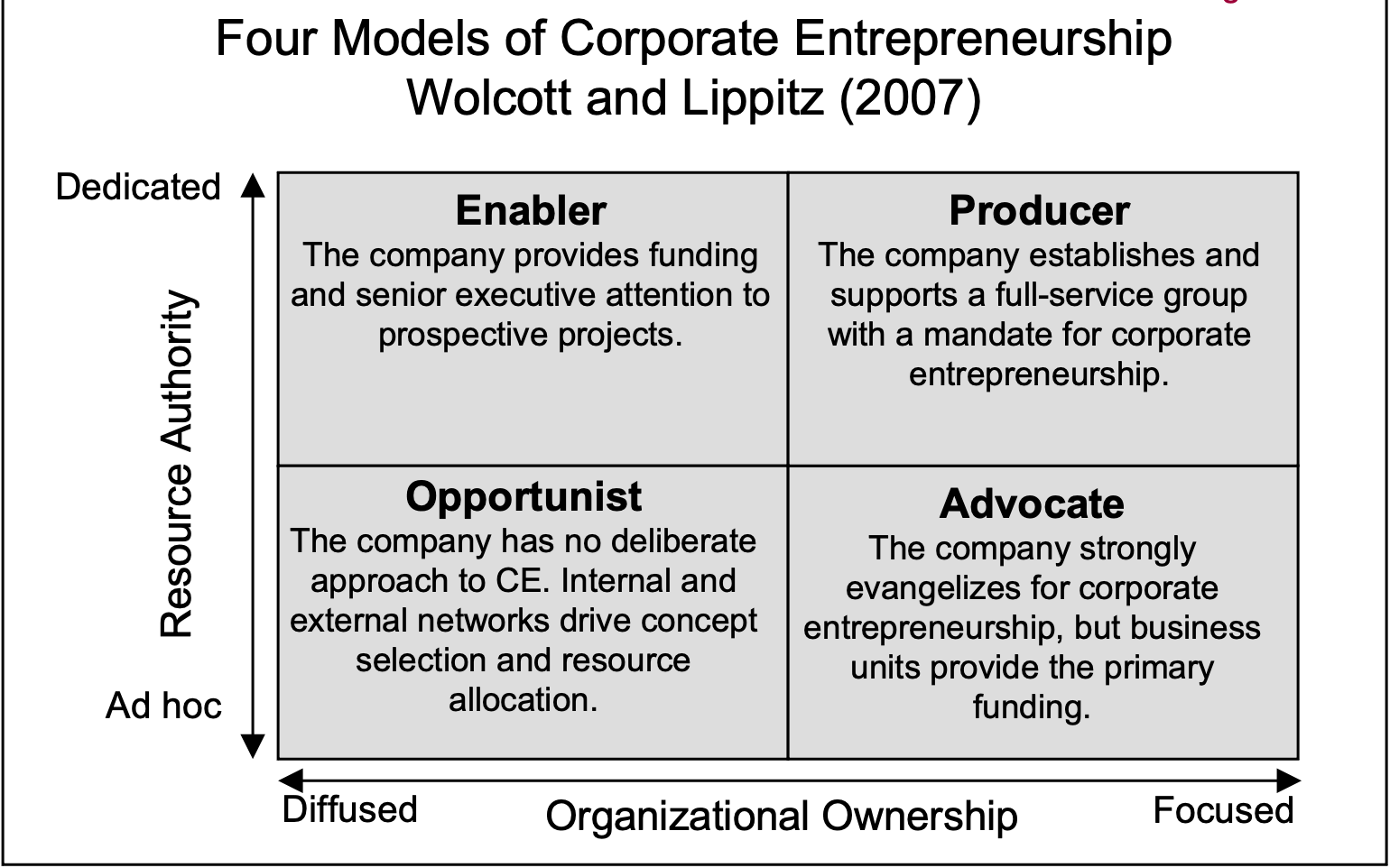In today’s rapidly evolving business landscape, companies must adapt to stay competitive. One way to achieve this is through corporate entrepreneurship. But what exactly is corporate entrepreneurship, and why is it important?
In this article, we’ll explore the concept of corporate entrepreneurships, its significance, benefits, characteristics, and how to foster it within an organization.
Corporate entrepreneurship, often referred to as “intrapreneurship,” is the practice of applying entrepreneurial principles within an established organization. It involves the development of new ideas, products, or services to drive innovation and growth from within.
Table of contents
- What is Corporate Entrepreneurship?
- Importance of Corporate Entrepreneurship
- Benefits of Corporate Entrepreneurship
- Key Characteristics of Corporate Entrepreneurs
- Corporate Entrepreneurship vs. Traditional Entrepreneurship
- How to Foster Corporate Entrepreneurship
- Measuring the Success of Corporate Entrepreneurship
- The Role of Leadership in Corporate Entrepreneurship
- Conclusion
- FAQs
What is Corporate Entrepreneurship?

Corporate entrepreneurship is a strategy that encourages employees to think and act like entrepreneurs while working for a larger organization. It involves taking calculated risks, exploring new opportunities, and being open to innovation. However, corporate entrepreneurship isn’t limited to a specific industry or company size; it can be embraced by both large corporations and smaller enterprises.
Importance of Corporate Entrepreneurship
A vital for organizations looking to remain relevant in a constantly changing market. Here are some reasons why it matters:
- Adaptation to Market Changes: Businesses must adapt quickly to evolving market conditions. Corporate entrepreneurship allows companies to identify and seize opportunities in a timely manner.
- Increased Competitiveness: In a competitive landscape, organizations that encourage innovation and creativity gain a competitive edge. Moreover, this strategy enables companies to stand out in their industry.
- Enhanced Employee Engagement: When employees are encouraged to contribute innovative ideas, they become more engaged and motivated, leading to higher productivity and job satisfaction.
Benefits of Corporate Entrepreneurship

Embracing corporate entrepreneurship brings several benefits to an organization:
- Diversification: It helps diversify a company’s product or service portfolio, reducing dependency on a single revenue stream.
- Improved Decision-Making: Companies that promote entrepreneurship enjoy faster and more effective decision-making processes.
- Risk Management: The calculated risks taken in corporate entrepreneurships often lead to better risk management strategies.
- Long-term Growth: By continually exploring new opportunities, organizations can achieve sustainable long-term growth.
Key Characteristics of Corporate Entrepreneurs
Corporate entrepreneurs, often called “intrapreneurs,” possess certain traits that set them apart:
| Trait | Explanation |
| Innovative Mindset | Actively seeks fresh ideas and methods to improve processes and develop innovation. Fosters a culture of continuous improvement. |
| Risk-Taking | Embraces calculated risks, exploring uncharted territory with informed decisions to drive breakthrough innovations. |
| Resilience | Views failures as learning opportunities, bouncing back stronger, and persisting through challenges for long-term success. |
| Adaptability | Quickly adjusts to changing circumstances, ensuring effective navigation of shifting market conditions and emerging opportunities. |
Corporate Entrepreneurship vs. Traditional Entrepreneurship

While corporate entrepreneurship and traditional entrepreneurship share similarities, they also have distinct differences. Traditional entrepreneurship involves starting a new business from scratch, while corporate entrepreneurship involves innovating within an existing organization.
How to Foster Corporate Entrepreneurship

To encourage corporate entrepreneurship within an organization, the following strategies can be employed:
- Create an Innovation-Friendly Environment: Develop a workplace culture that values and rewards creativity and innovation.
- Provide Resources: Allocate resources for employees to explore new ideas and projects.
- Leadership Support: Top management should actively support and champion entrepreneurial initiatives.
- Training and Development: Offer training and mentorship programs to foster entrepreneurial skills.
Measuring the Success of Corporate Entrepreneurship
It’s essential to establish key performance indicators (KPIs) to measure the success of corporate entrepreneurship initiatives. Metrics could include revenue from new products, employee satisfaction, and time-to-market for innovations.
The Role of Leadership in Corporate Entrepreneurship
Leaders play a crucial role in promoting corporate entrepreneurship. They should lead by example, provide guidance, and create a culture that encourages entrepreneurial thinking.
A culture of innovation is a core element of successful corporate entrepreneurship. Organizations should foster a climate where employees feel safe to propose and experiment with new ideas.
Conclusion
Corporates entrepreneurship is a powerful strategy for organizations looking to thrive in a rapidly changing business environment. By promoting innovation, risk-taking, and an entrepreneurial mindset, companies can secure their future in a competitive marketplace. Embrace corporates entrepreneurship, and watch your organization transform and flourish.
Readmore:
What is Creativity in Entrepreneurship
Is Startup India Boosting Entrepreneurship
How Entrepreneurship Has Contributed to Society
Which One is Not the Barriers of Entrepreneurship?
FAQs
While both involve innovation and risk-taking, corporate entrepreneurship happens within an existing organization, whereas traditional entrepreneurship involves starting a new business from scratch.
Yes, challenges include resistance to change, resource allocation issues, and potential failure of new initiatives.
Leaders should lead by example, provide guidance, and create a culture that encourages entrepreneurial thinking.
Key performance indicators (KPIs) can include revenue from new products, employee satisfaction, and time-to-market for innovations.



